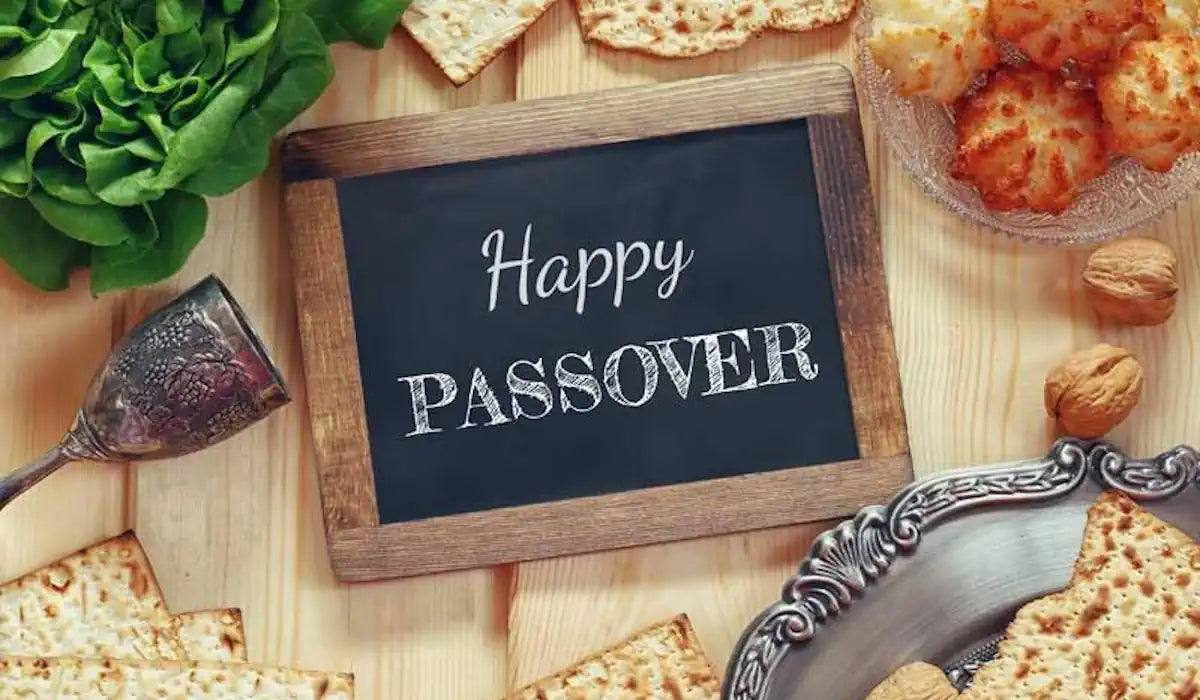Passover Rituals: A Time of Remembrance & Celebration
Passover is one of the most significant and widely celebrated Jewish holidays, filled with meaningful traditions that bring families and communities together.
Here are some of the most important Passover rituals:
📖 The Seder: The highlight of Passover is the Seder, a ceremonial meal that follows a structured order (the word "Seder" means "order" in Hebrew). Families gather to read the Haggadah, a book that recounts the story of the Exodus, sing songs, and discuss the themes of freedom and redemption.
🥖 Avoiding Chametz: During Passover, Jews avoid chametz (leavened bread or anything made with wheat, barley, rye, oats, or spelt that has risen). This is to remember the Israelites’ hasty departure from Egypt, when they didn’t have time for their bread to rise. Instead, they ate matzah. Many Jewish families clean their homes thoroughly before Passover to remove all chametz.
🕯️ The Four Questions (Ma Nishtana): The youngest person at the Seder asks four key questions, beginning with: "Why is this night different from all other nights?" This encourages discussion and reflection on the meaning of Passover.
🍷 Four Cups of Wine: Each person drinks four cups of wine (or grape juice), symbolizing the four expressions of redemption in the Torah: "I will bring you out," "I will rescue you," "I will redeem you," and "I will take you as My people."
🌊 Recounting the Ten Plagues: As part of the Seder, we remember the plagues that struck Egypt. Each time a plague is mentioned, we remove a drop of wine from our cups to acknowledge the suffering of the Egyptians.
🚪 Elijah’s Cup & the Open Door: A special cup of wine is poured for the prophet Elijah, and the door is left open in anticipation of his arrival, symbolizing hope for future redemption.
🍽️ Traditional Foods at Passover
Passover is not just about avoiding certain foods like chametz, it’s also about enjoying delicious, meaningful dishes that connect us to the story of the Exodus. Here are some traditional foods eaten during Passover and their symbolism:
🫓 Matzah: The unleavened bread that represents the Israelites’ hurried escape from Egypt. Since they had no time for their bread to rise, matzah is eaten to remind us of that journey. Some families also eat handmade shmurah matzot, which is carefully watched from harvest to baking to ensure it remains unleavened.
🥕 Maror: Bitter herbs, usually horseradish, symbolizing the harshness and suffering of slavery in Egypt. Some people also use romaine lettuce, which starts out mild but turns bitter, mirroring the gradual oppression of the Israelites.
🍎 Charoset: A sweet mixture of apples, nuts, cinnamon, and wine, representing the mortar used by Israelite slaves to build for Pharaoh. Different Jewish communities have their own variations. Sephardic Jews often use dates and figs instead of apples!
🌿 Karpas: A green vegetable (often parsley or celery) dipped in salt water. The green represents spring and renewal, while the salt water represents the tears of the enslaved Israelites.
🍖 Zeroa: A roasted shank bone, symbolizing the Pesach (Passover) sacrifice that was offered in the Temple in Jerusalem. Today, it reminds us of the importance of faith and redemption.
🥚 Beitzah: A roasted egg, symbolizing mourning for the destruction of the Temple and the cycle of life. It also represents renewal and new beginnings.
🧫 Beyond these Seder plate items, Passover has some delicious foods, including matzah ball soup, brisket, tzimmes (sweet carrot dish), and macaroons.
Passover is a time to reflect on the past, cherish freedom, and create meaningful traditions with loved ones.
❓Do you have any special family traditions during Passover?
















)
)































